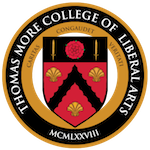Some essays write themselves and this is one of them. In 1996 the philanthropist George W. Mallinckrodt gave a substantial gift to the Bodleian Library of Oxford University to preserve its vast collection of incunabula. When the gift was announced, Mallinckrodt said it was “a happy coincidence that one of my ancestors, the Canon of Munster Cathedral, Bernhard von Mallinckrodt, was the first to use the word “incunabula” about books when, back in 1640, he wrote his pioneering work on the invention of printing.” If there is one subject more fascinating than incunabula, it is what we might call pre-incunabula, with all due respect to Canon von Mallinckrodt.
For the average householder, if there is a document more beguiling than a medieval Christian manuscript, it is a medieval Islamic manuscript. A scholar is working on the first volume of A New Catalogue of Islamic Arabic Manuscripts in the Bodleian Library. This is particularly concerned with medieval manuscripts, since the last time Islamic Arabic manuscripts of that period were catalogued by the Bodleian was in 1835. Of special interest is the coincidence of two such manuscripts, one of which has been in the Bodleian for 300 years and the other for 200 years. Both are supposedly by the same scribe and both were completed on a date which, on the Christian calendar, is August 22, 1188. The mind reels at this: Not only does each manuscript consist in 193 folios, or 386 pages, numerically matching the year B.C. when the Corinth-Argos federation was dissolved, but the Arab scribe was finishing his arduous work exactly as Pope Clement III was declaring the Scottish bishops independent of the Archbishops of Canterbury and York. As that anonymous didact must have been wearily laying down his pen, Archbishop Baldwin and Geraldus Cambrensis were trying to excite the sullen Welsh under Prince Dafydd ab Owain Gwynedd to join the Third Crusade, partly in response to the Battle of Hattin the year before that opened Jerusalem to the Arabs. News of Hattin may have reached the scribe as his red and black ink was drying, the city of Stockholm was being founded, and the Kakatiyas of Warangal were establishing themselves in the Indian ascendancy of the Rajput states. Four short years later, the head of the Minamotu clan, Yorimoto, would become Sei-i-tai Shogun (Barbarian Subjugating Commander-in-Chief) in Kamakura. In the year of Canon von Mallinckrodt’s treatise on incunabula, a large embassage of Portugese from Macao would all be beheaded by the third Tokugawa Shogun, a distant successor of Yorimoto.
Thus two obscure sets of Islamic folios open a vast intercultural panorama. This should not be surprising if we realize that an astonishing triad of the most distinguished satirical poets in Iraqi history were contemporaries in the Ommiad period: Jarir (d. 727) who was a Christian, and the Muslims, al-Akhtal (c. 640-710) and al-Farazdaq (c. 640-732). They were all of an age before religious feelings hardened and satirical verse became more acerbic.
The folios of 1188 have a charm typical of so many Arabic manuscripts inscribed with such appeals as “Oh, Buttercup!” This exclamation (“Ya Kabikaj”) appears because buttercups were considered a useful repellent against insects attracted to the fish-glue, starch, and honey used in the binding of folios. The Ayyubid rulers could not have known that on the 700th anniversary of the apex of their power in Egypt, poor little Buttercup would appear in the first performance of H.M.S. Pinafore. For pre-incunabulists the drama now reaches fever pitch. The folios of 1188 were submitted to the Scanning Proton Microprobe Unit of the Oxford Nuclear Physics Laboratory in 1994. Both sets of folios were almost photographically identical—including every line and shading—but the laboratory could not account for this, nor did it offer an hypothesis to explain why all that was written in red ink in one set is absent from the other. Six years earlier, this Oxford laboratory was one of three which stirred controversy by carbon dating the Shroud of Turin to sometime between 1260 and 1390.
The virtual identity of the two folios remains what experts call an “unsolvable conundrum.” Further research on the Islamic manuscripts may shed light on the Shroud, and vice versa. One lesson from the romance of pre-incunabula is plain: It is unscientific to pass off a forgery as a coincidence or a coincidence as forgery. On this, one likes to think, the diverse movers and shakers of 1188 would agree, including a pope, a maharajah, and a shogun.

